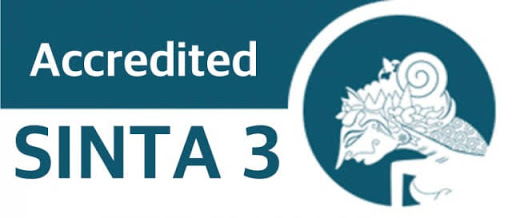Testing of Performance: International Versus Domestic Portfolio
 Abstract Views:
464 times
Abstract Views:
464 times
 PDF Downloads:
421 times
PDF Downloads:
421 times
Abstract
This research investigates performance of portfolio with international portfolio and domestic portfolio. Buttler (2012) and Solnik (1974) explained that diversification of international portfolio will reduce risk of portfolio better than domestic portfolio. To measure performance of portfolio this research uses Treynor, Sharpe and Jensen Alpha. This research uses single index model to formed optimal international and domestic portfolio. Test showed that international portfolio have a better performance than domestic portfolio based on Treynor and Sharpe measurement. However, domestic portfolio have a better performance than international portfolio in higher return (Jensen measurement) and high risk.
Downloads
References
2. Buttler, Kirt.C. 2012. Multinational Finance : Evaluating Oppurtunities, Costs, and Risks of Operation. Fifth Edition. John Wiley & Sons, Inc. USA
3. Guesmi, Khaled., Teulon, Frederic. 2014. Equity Market Integration and Currency Risk : Empirical Evidence for Indonesia. Working Paper. IPAG Business School Paris
4. Hartono, Jogiyanto. 2008. Teori Portofolio dan Analisis Investasi , 5th ed. BPFE: Yogyakarta
5. Kang, Jun-koo; Stul, Rene M. Z. 1997. Why is there a home bias ? An analysis of foreign portfolio equity ownership in japan. Journal of Finance Economics 46 : 3-28
6. Levy, H., Sarnat, M., 1970. International diversification of investment portfolios. American Economic Review 60 : 668–675
7. Lind, Douglas A dkk,. 2015.Statistical Techniques in Business & Economics, 16th ed. McGraw-Hill : United States
8. Markowitz, H. M. 1952. Portfolio Selection. The Journal of Finance (1) : 77–91
9. Reilly, F.R. and Brown, K.C., 2012, 10th Ed, Analysis of Investment and Portfolio Management, Thomson South-Western , Canada
10. Sekaran, Uma., dan Bougie, Roger. 2013. Research Methods for Business : A Skill-Building Approach, 6th ed. John Wiley & Sons : Chicester, UK.
11. Septyarini.2012, Analisis Portofolio Optimal Berdasarkan Model Indeks Tunggal Pada Saham LQ-45. Universitas Gunadarma
12. Sharpe, W. F. 1964. Capital Asset Prices: A Theory of Market Equilibrium Under Conditions of Risk. TheJournal of Finance 19(3), 425–442.
13. Solnik, Bruno H. 1974. Why not diversify Internationally rather than domestically?. Financial Analysts Journal: 48-54
14. Solnik, Bruno; Boucrelle, Cyril; and Fur, Yann Le. 1996. International Market Correlation and Volatility. Financial Analysts Journal, Iss: Sep/Oct pp. 17-34.
15. Solnik, Bruno. 2000. International Investment , 4th ed. Addison Wesley Longman, Inc: USA
16. Stulz, R.M., 1981a. On The Effects of Barriers to International Investment. Journal of Finance 36, 923-934.
17. Tandelilin, Eduardus. 2010. Portofolio dan Investasi : Teori dan Aplikasi, 1th ed. Kanisius : Yogyakarta
18. Treynor, J. L. 1962. Toward a Theory of Market Value of Risky Assets. Unpublished manuscript. “Rough Draft” dated by Mr. Treynor to the fall of 1962. A final version was published in 1999, in Asset Pricing and Portfolio Performance. Robert A. Korajczyk (editor) London: Risk Books, pp. 15–22

This work is licensed under a Creative Commons Attribution 4.0 International License.
Articles published in Journal of Entrepreneurship & Business are licensed under a Creative Commons Attribution 4.0 International (CC BY) license. You are free to copy, transform, or redistribute articles for any lawful purpose in any medium, provided you give appropriate credit to the original author(s) and the journal, link to the license, and indicate if changes were made.
Authors submitting to this journal agree to make their work freely available under the CC BY 4.0 license, ensuring broad dissemination and reuse. The full license details can be accessed at https://creativecommons.org/licenses/by/4.0/.
This ensures that they receive the maximum dissemination because there are no barriers to access. This license allows readers to disseminate and reuse the paper, but always requires them to grant the authors and the first publication full credit.
While JEB upholds ethical publishing standards, the responsibility for ensuring originality and compliance with copyright regulations lies with the authors. The journal is not liable for any legal claims related to the content of published articles.
For further inquiries, please contact the editorial team.

 DOI:
DOI:











